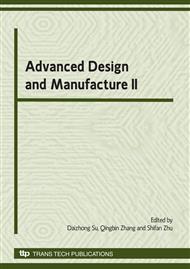p.537
p.541
p.545
p.549
p.553
p.557
p.561
p.565
p.569
A Knowledge-Based System for Product Design with Modules
Abstract:
In the paper, the knowledge-based architecture for product design with modules is suggested, which discovers and shares the product knowledge and design rules to increase the effectiveness/efficiency of the product design with modules. This solution approach involves modeling modular products knowledge, modular components selection, and feasible sequence of assembly. In modular products knowledge model, an object-oriented approach is introduced to capture the knowledge of modular product. In modules selection and feasible sequence of assembly, a reasoning mechanism is fabricated based on Protegee and JESS expert tool. Last, a particular case of bicycle design is studied through the use of this knowledge-based prototype system to prove the effectiveness/efficiency of product design with modules. However, a knowledge-based system of product design with modules is also implemented to provide adaptive design rules and share design knowledge in distributed environment. It will greatly enhance the competitive capability of companies trying to reduce the engineering design change.
Info:
Periodical:
Pages:
553-556
Citation:
Online since:
October 2009
Authors:
Price:
Сopyright:
© 2010 Trans Tech Publications Ltd. All Rights Reserved
Share:
Citation:


